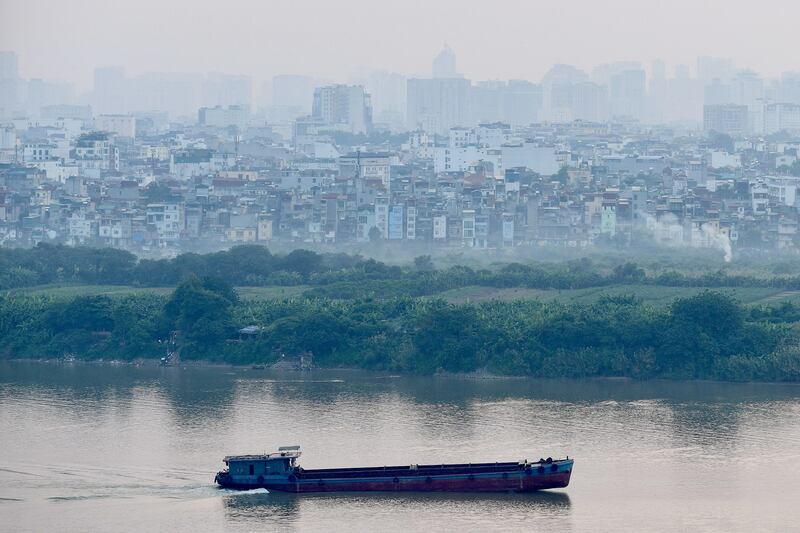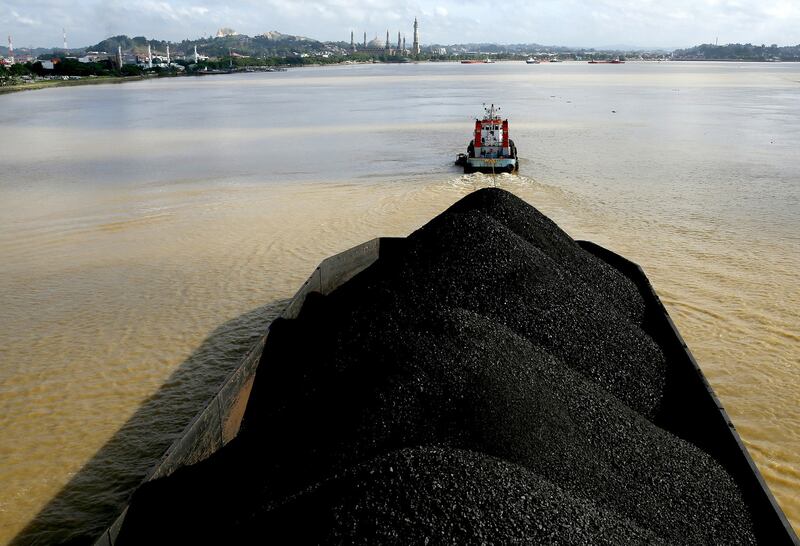Coal is falling out of favor across the developed world because of concerns over pollution and climate change, but it remains a growing energy choice in many parts of Southeast Asia driven by Chinese investment.
While many markets, including the United States, Europe, and East Asia, shift away from coal, Chinese banks, energy and construction companies remain committed to financing and building dozens of plants in Indonesia, Vietnam, Cambodia, and Laos.
That’s despite growing concerns about environmental degradation, electricity oversupply, and air pollution. Coal is widely considered the dirtiest fossil fuel for electricity generation, with the highest greenhouse gas emissions, and widespread air, water, and soil quality issues due to mining, burning, and coal waste.
“It’s definitely true that China is the main investor for coal in Southeast Asia,” said Isabella Suarez, a Philippines-based analyst for the Center for Research on Energy and Clean Air (CREA). “If you look at overseas investment portfolio for Chinese coal, Indonesia and Vietnam are second- and third-highest in the world.”
Coal accounts for 56 percent of electricity generation in Indonesia, 34.3 percent in Vietnam and 29.3 percent in Cambodia.

China dominates overseas coal
Increasingly, China is the only country actively pursuing coal investments. Chinese financial institutions including China Construction Bank, Bank of China, ICBC, and the Agricultural Bank of China, are ranked as the top 11 financiers of coal-fired power and the top 10 financiers of coal mining. That's according to Banking on Climate Chaos , a report released in late March by a coalition of international NGOs including Rainforest Action Network, Sierra Club, and Oil Change International.
The report found that in total, Chinese banks account for US$244.7 billion in total coal-related financing since 2016, more than the largest American, European, Japanese, Korean and Canadian banks combined.
Chinese-funded projects in Southeast Asia include the 625 megawatt (MW) Unit-8 of the Banten Suralaya power station and the 1200 MW Bangko Tengah SumSel 8 plants in Indonesia; the 1980 MW Vĩnh Tân-3 plant in Vietnam; the 700 MW Botum Sakor power station in Cambodia; and the 668 MW Dinginin power station in the Philippines.
Local communities actively oppose many of these projects because of environmental and social impacts. The Sumsel 8 plant is especially concerning as it is a mine-mouth facility, in which the coal-fired power plant is built near the coal mine.
“When the plant is in operation, then the community nearby will face double impacts,” said Pius Ginting, the Jakarta, Indonesia-based executive director of Aksi Ecologi Dan Energi Rakyat (AEER), a domestic NGO advocating against Chinese coal projects. “One from the air/water pollution from the power plant, and second is from the mining itself, because the coal mine is in the same area.”
AEER, whose name translates as Ecological Action and People Energy, sent a letter in early 2021 expressing these concerns to the main financier, the Export-Import Bank of China, the lead company building the project, China Huadian Corporation, and the Chinese Embassy in Jakarta. AEER has yet to receive a response.
Besides the environmental impacts, Ginting fears that Chinese funding for coal makes it harder for Indonesia to invest in renewables.
“There could be an opportunity for renewable energy to thrive, but these are overcome by the presence of China’s investment in Sumsel 8 and other coal plants,” said Ginting.

Pollution and financial concerns
Another concern is air pollution. Southeast Asian cities including Jakarta and Hanoi are regularly ranked among the most polluted in the world , and coal is a driver due to the proximity of existing and planned Chinese-funded coal plants.
According to a 2020 report from CREA, trans-boundary air pollution from coal power plants in neighboring provinces, like the Chinese-funded one in Banten, could result in significantly higher health impacts in Jakarta . Similarly, their March 2021 analysis of Vietnam found that the 24 planned coal plants, the majority of which are backed by Chinese investment, could result in 70,000 premature deaths in the country.
A big factor is lax standards of pollution control.
“The coal plants that are being built overseas are generally more polluting and less efficient than the plants that are built [in China],” said Suarez.
Another concern is that the deals put the financial burden, in the long term, on the receiving country, by locking them into long-term payments even if the plant is not needed. When considering the long life of coal-fired power plants – up to 50 years – countries like Indonesia, Vietnam, and Cambodia could be paying China for dirty energy for decades.
"For China it's an easy game. Provide the working capital, build a plant with my own labor force, my own companies, and then the other side will pay me back, so I get my loan back," said Ghee Peh, a Hong Kong-based coal energy finance analyst at the Institute for Energy Economics and Financial Analysis (IEEFA). According to IEEFA , most Chinese overseas coal funding utilizes a mostly Chinese labor force, Chinese contractors, and Chinese technology, putting into question how much the local economy actually benefits from these deals.

Waiting for China’s green promises
In the past year, the second- and third-largest funders of coal-fired power plants in Southeast Asia, South Korea and Japan, announced plans to gradually reduce coal investments. Then, earlier this year, Malaysia's CIMB bank announced it would also phase out coal from its portfolio by 2040, the first bank in Southeast Asia to make such a move.
There have been efforts to incorporate green and sustainable principles into China's Belt and Road Initiative (BRI), a global infrastructure development strategy adopted by the Chinese government in 2013 to invest in nearly 70 countries around the world. There were also hopes that China's adding the term "ecological civilization" into its constitution in 2018 as part of its sustainable economic development agenda would also mean less investment in coal.
In Southeast Asia, however, thus far, there is no sign that China will follow its neighbors and stop exporting and funding dangerous, polluting coal technology to the region.
“Until there are actual policy guidelines for these entities that are investing, we are not going to see change, and that’s why a green BRI hasn’t really happened,” said Suarez. “It’s good for their domestic institutions to be investing abroad, and it’s helped their economy.”
